Consider the Source, Pt. 2
Truth in Numbers
Hi, Friends!
I’m mixing up the format today. Since this is less a news letter and more a reflection piece, I’m moving my “short take on faith and culture” to the top.
And since we are doing stuff and not just thinking about stuff, I’ll follow up with what’s happening in Lancaster, PA.
Lastly, I’ve tightened up our second two headings and foregrounded a brief table of contents to make it handier for you to prioritize your own content. Like so:
Tomseés: Part 2 of my series on attestation: Why it takes a community to determine “true truth.”
What Happened? Oh, wow! So much: The Square Halo Books conference we collaborated on was a blast.
What’s Next? We expose how the true crime genre has captured our hearts, and we ask, “Why drive when you can walk?” (April & May Forums)
Warmly,
Tom Becker, Founder & Curator, The Row House, Inc.
Tomsées
In which I share a short take on Christ and culture.*
Last month I recounted a fireside chat I had with two young Mormons. Here ‘tis if you want a refresher:
I pressed them on the source of their sect, namely the spurious account of Joseph Smith’s “revelation” of The Book of Mormon, but they could only volley bullet point platitudes. It got me thinking about the communal attestation of the historic Christian faith compared to the solo enlightenment of one person. So last month I promised
to talk more directly about the role attestation plays in any brand of faith. What we find in the Jewish understanding of religion up through the Christian era was not only unique back then, it remains a most compelling defense for something to believe in, solely based on the kind of attestation it’s based on.
Don’t Take it from Me
What is attestation?
Simply put, it’s testimony. In keeping with our “consider the source” theme, it makes a huge difference who is doing the attesting and how many “whos” there are.
For instance, if I testify to you that I saw a glimmering disc floating over Park City Mall while riding my bike, you may look askance or demand more facts. What you probably should be thinking is, “OK, Tom. Who else saw it?”
At which point you’d check your Twitter feed or sign into lancasteronline for breaking news. If you see nothing about a U.F.O. over Lancaster, you’d be wise to nudge me away from riding my bike on busy roads.
What sort of attestation is Christianity based on?
It’s rooted in the New Testament (NT) writings, what some call “the apostolic testimony.” Think of it as an apostolic community because the eventual formation of trusted sources of Scripture was determined not just by a small cloister of guys in sandals but by a host of women and men who made up the early church.
They had a nose for the authoritative voices of Jesus’ closest disciples, and they could tell if something was off-brand.
The NT also is attested by a stupefying amount of extant manuscripts compared to other classic works of the time. I’ll talk more about that in Part 3.
But the main point is that the NT documents are not a lone ranger revelation or a mere charter for Groupthink.
Before there was an apostolic community to set down and convey the story of Jesus, there was Judaism. We who are Christians should stop and thank God each and every time we see a synagogue. Jewish people are a living testimony not only to an ethnicity attested in history but also to a living tradition out of which the Jesus “way” was birthed.
The Hebrew tradition of copiously (and, really, pedantically) copying Scripture continues to hold the attention of antiquities scholars to this day.
Sometimes I take my combined Hebrew and Greek testaments to Sunday worship as a way to keep up my reading skills learned in seminary. Believe me, it’s a brick! The he “apparatus” included within it situates the text amidst its thousands of manuscripts. It only compounds the fact that the Bible is no mere invention of a group of starry-eyed zealots; rather, it’s a sacred text according to those who have lived and died to transmit it. You don’t have to be any kind of believer in its message to appreciate the enormity of the Bible’s scope over millennia and conveyed by dozens of human sources.
Craig Bartholomew, following N.T. Wright’s scholarship on the reliability and reasonableness of the New Testament texts, expounds on the history, literature, and theology baked into The Old Testament.1 We need to take these three horizons seriously and not eliminate any of them just because they don’t fit our presuppositions about what is possible or not.
Why? Because the text themselves do. So do their followers. Where Jews and Christians diverge is the theological assertion that Christ is Messiah; In the other two lanes (history and literature), they’re in the same car.
Community Not Commodity
This testimony of Scripture does not presuppose one person’s download from on high; Rather, it’s a revelation among and through a vast host of human writers.
The Jews were and are a people of The Book. Christians claim the same thing and would add that the writings of Luke, John, Mark, Paul, and Peter constitute an ongoing witness of the Living God in the world.
Revelation, if it exists, is wider and wilder than we would ever imagine.
It hit me early on in my Christian faith as a teenager that I was stepping into the wildness of a variety of expressions of faith in individuals and groups scattered across the globe, my college campus, and the halls of history.
Counterbalancing all that was one essential message: God drawing near to us humans with sacrificial love and covenantal devotion. Yes, Jesus.
Not Mormons, Honestly
Before I committed myself, however, I had a strange experience of attestation in my hometown. A couple of nerdy guys tried to corner me near the railroad tracks to see if I was “saved.” I got them to move on, but not before one of them said something like,
If Jesus really rose from the dead, he must still be alive today.
The implication was that I should come to Jesus to be saved, of course, which I didn’t want to do. But what stuck with me is the notion that their message, if true, would have to be some kind of True truth, as Francis A. Schaeffer would say (someone I would read just a few years later that helped me see the reasonableness of the Faith).
These boys’ message to me was not about upping my religious fervor within their brand of faith based on their sacred leader’s sole revelation. Rather, it was something that had to be attested to by countless people, a message that might just be bound to a living God I could know personally.
May the Fourth
As an imperfect illustration, take George Lucas. All the Star Wars lore came from his brain. He got it in motion, superintended it over nine films and into numerous spin-offs. (Forget the sale to Disney for just a moment. It doesn’t help my illustration!).
A sort of canonical authority developed, hence, around Lucas’s initial vision. Without it the main story of Luke Skywalker’s transformation gets lost. “Faithful fans” try to stay on message, rooted in the mythology. Others go off-brand, but there tends to be a Death Star gravitational pull back to the genesis in Lucas’s spark.
The analogy breaks down because none of Star Wars is rooted in our earthly existence or attested history. Plus, not being divine in origin, it’s entirely likely that the die-hard believers in the canon of Lucas will slowly dissipate over time.
But believers of the biblical story just keep coming. And part and parcel of their belief is a reliance on a God who speaks concretely to them in texts written down by a host of real human beings.
Does it require a leap of faith to receive the Scriptures? Perhaps in a way, but any world view requires one, or at least steps and hops in the right direction.
We ought to consider the source of our belief carefully.
Jesus Said…Did He Really?
If someone says to you, “Jesus says,” what they’re really saying, maybe without realizing it, is this:
I’m telling you that
John the apostle said
That Jesus said…
Now, that doesn’t sound very spiritual or immediate. But those are the facts. If the message of Christ is truly divine in origin, then human attestation is no object to its efficacy. In fact, it’s its super power.
Hearing God’s word through another human being is the norm in Christian communication, another unique aspect of Christian faith along with its numberless attestations by people throughout history who’ve encountered the Jesus of the message.
How the Work Gets Done
Recently I was sitting a few feet from my friend Jeremiah who was performing a one-man play on the life of the Baptist preacher Charles Spurgeon. The message of Jesus in all its beauty sort of snuck u[ on me because, well, it was Jeremiah my pal, right? Yes, as a sort of conduit.
It looked something like this:
Jeremiah Miller acting the part of Spurgeon
who tells the story of wandering into a small gathering at a Free Methodist Church
as a simple cobbler fills in for a pastor by preaching an impromptu sermon
in which, like Paul, he is presenting Christ crucified to the congregation
and alluding to the snake Moses erected in the wilderness that God graciously provided for the Israelites’ healing from debauched sinfulness
and quoting the apostle John in his Gospel, chapter 3
who uses the scene from Numbers to implore his first century readers to look to Jesus to find life.
I found myself looking to Jesus anew in the front seat of a black box theater with a few strangers, tearful.
This is utterly different from a call to heed a solitary leader’s so-called revelation. And it’s different from falling into group hysteria where brains are shut down as happened at Jonestown in Guyana when 900 abused souls committed suicide just because, well, consider the source.
The historic Christian faith, in contrast, has been handed down through centuries by myriad communities of believers who have confessed a common faith rooted in one resplendent story of grace which is the chorus of all of Scripture.
Jesus never wrote a book, but the force of his character inspired a new genre: A Gospel. Matthew, Mark, Luke, and John wrote it out as real time witnesses, and the apostolic family signed off. None of it was ever done in secret.
Nowhere is lockstep uniformity of practice and belief an assumed reality through the worldwide church. We differ, argue,and splinter because we essentially believe the apostolic community is a source worth wrestling over.
Even the imperfection of the practiced Faith is no object to God’s work in the world.
Is it because the Source behind all sources is a personal, living God?
*Tomsées is a nod to Pensées, an eclectic collection of writings by Blaise Pascal which were a work of apologetics for the Christian faith, published posthumously in 1670. If you please, you can pronounce it “Tom says.” Trying to pronounce French might cause bodily injury.
What Happened?
I glance back at a recent event and relay some thoughts.
Square Halo Books Conference, March 7 & 8
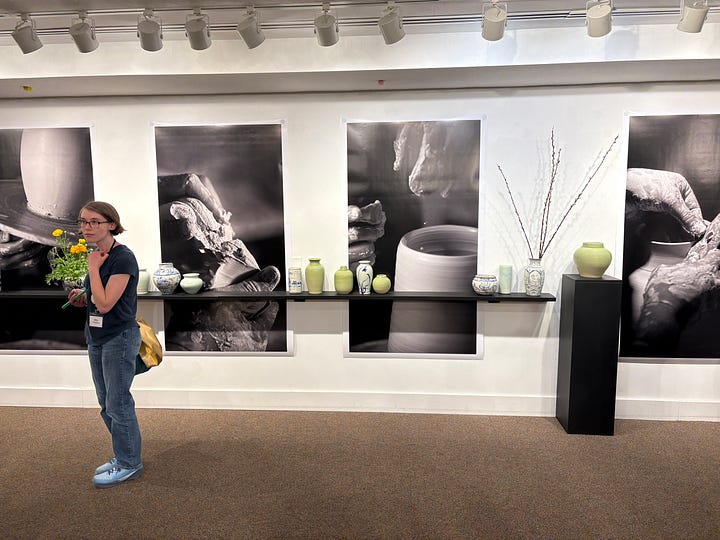
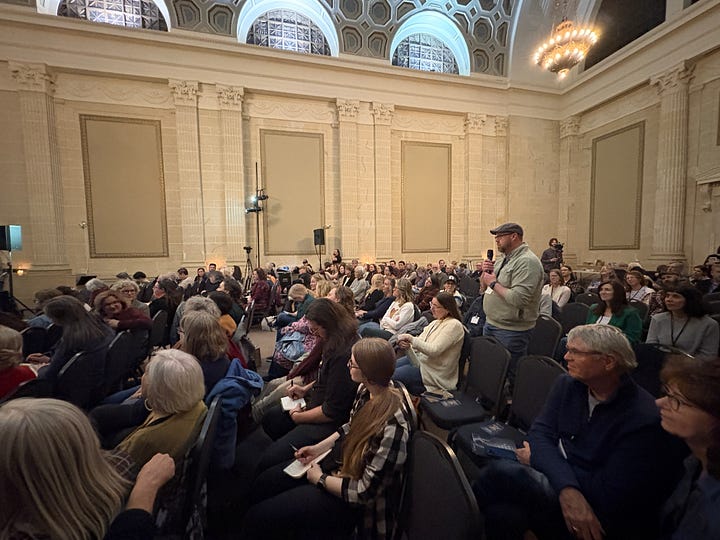
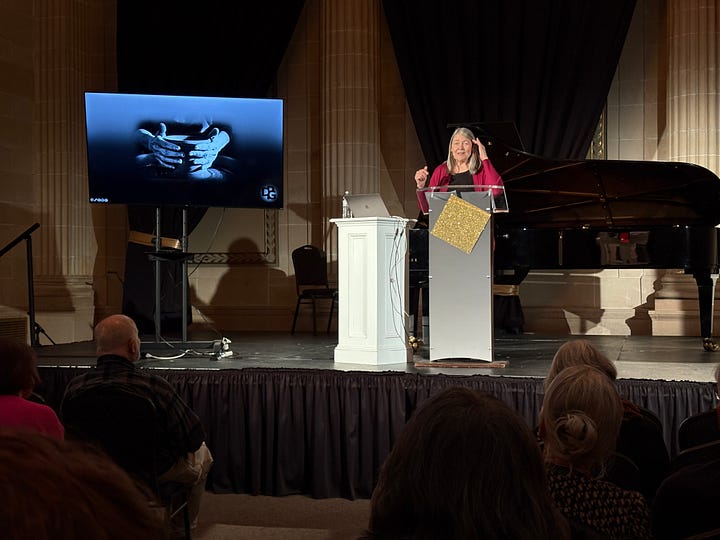

The theme was CREATIVITY, COLLABORATION, AND COMMUNITY. On that note, a few experiences stood out to me:
My good friend Matt Clark gave a talk alongside co-author (and repeat Row House presenter) Matthew Dickerson. They teamed up on a book for Square Halo called Birds in the Sky | Fish in the Sea. Between Dickerson’s wordsmithing and Clark’s intricate and whimsical hand-cut prints, it’s a delight. Clark delivered on my request to sign my copy with a sketch of me riding a dinosaur scooter.
Our Friday night Forum contribution featured Diana Pavlic Glyer. She gave a beautiful talk reflecting on the process of ceramic making and how it pictures God’s work of improvement in our lives. On Saturday she spoke while her friend Eddie spun and formed a vase for us all to see on a screen, all while being accompanied by a guitarist.
I spoke on Friday afternoon on a theme I develop in the introduction to my own Square Halo book Good Posture (2017). What am I Doing with this One Wild & Precious Life? Managing Vocational Dysphoria with God’s Help was my title. I built in a lot of time to hear others’ stories about finding work amidst the common difficulties of our lives. I was pleased that several people wanted to chat with me, and I felt quite honored to sit with them.
One such participant came up to talk to me, and I was shocked to recognize the name on his tag! I had mentioned my hometown of Watsontown, PA. “John Biddle” was the doctor who more than once stitched up my head when I was a boy. Standing before me was his grandson. No, he’s not a doctor; this John is on a church staff in Downingtown, and we intend to catch up again soon.
After the co-founder Leslie Bustard passed away, it wasn’t clear if and how this unique conference would go on. It has, and its future seems bright. Not often do you find such a generous, creative, and collaborative expression of faith mingled with a love for the arts.
I’ll be there next year to hear psychiatrist and author Curt Thompson. He does powerful work linking healing (of all kinds) to the role of the imagination and beauty.
I hope you’ll plan to join me.
What’s Next?
The 4-1-1 on What’s Coming Down the Pike at The Row House, Inc.
Apr 11 | True Crime: An Assessment of Truth Telling, Privacy, and Exploitation
I’m psyched to welcome my friend and seminary colleague Rev. Doug Serven to get into the weeds of this popular genre.
Why is it so popular?
Is that a good thing?
Who gains from it?
Doug is pastor of a small church outside of Baltimore where he lives with his wife Julie. He was a campus and church pastor in Oklahoma City for about 20 years, nowhere near the ocean! He now lives right on the Inner Harbor and is learning the art of sailing. He also finds and publishes authors who have something relevant to say about Christianity through Storied Publishing.
For our purposes, you can follow the podcast on which he is producer/researcher: True Believer: The Unsolved Murder of Elizabeth Mackintosh.
May 9 | Why Drive When You Can Walk?
Our final Forum on May 9th will be a follow-up to my two-part series Practicing Vincibility. You may recall I started by talking about the utter coolness yet perennial problem of automobiles.
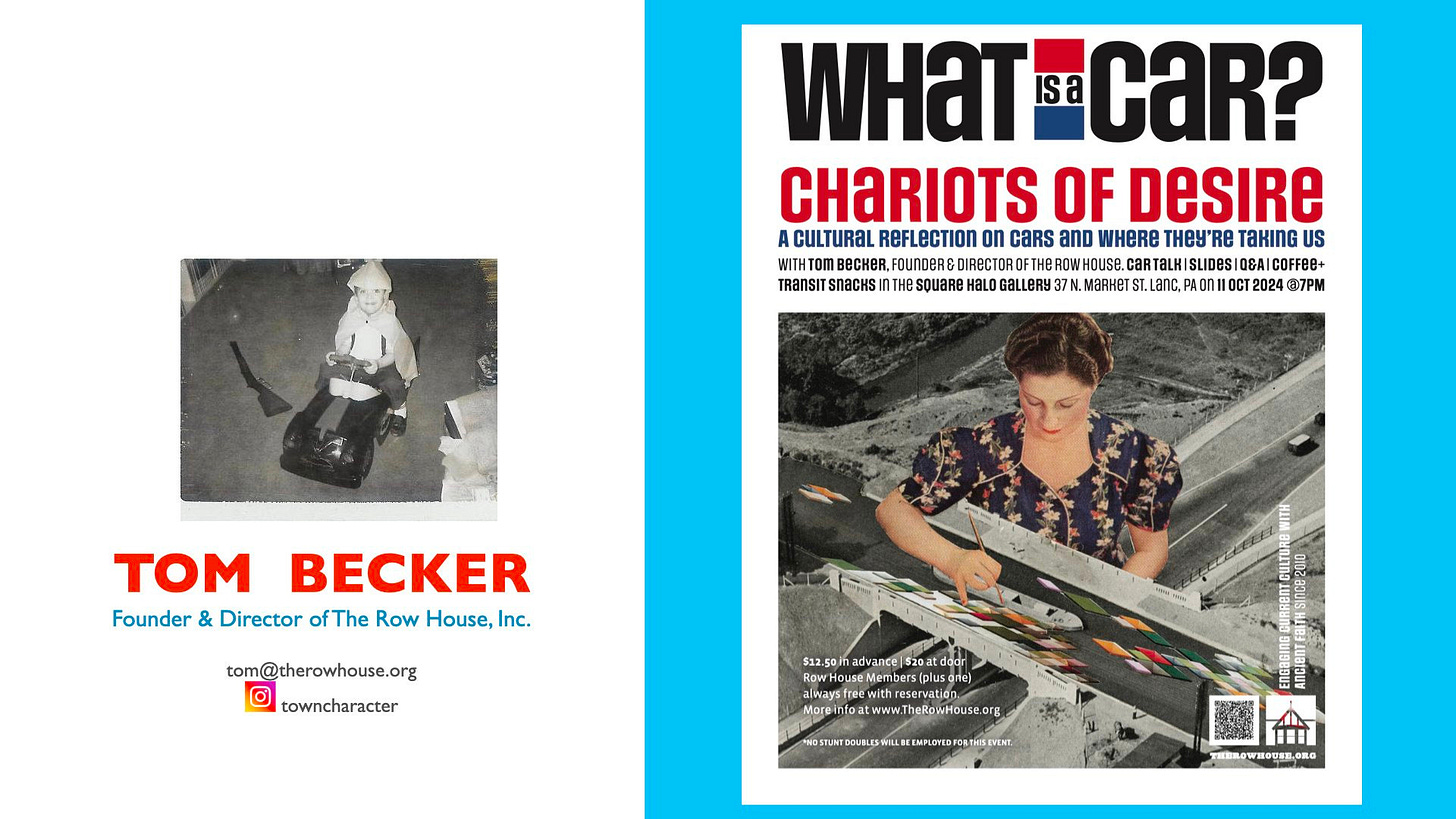
This time I’m getting a little help from my friends as we discuss the deeply human (read: spiritual) benefits of walking.
Emily Nixon, a long-time presence at our Forums, will show slides and talk about her experience on the Camino de Santiago walk in Spain.
And the night’s still young: Our post-Forum event will be, you guessed it, a walk to a pub in downtown Lancaster (probably Decades bowling and arcade, but stay tuned). Along the way we’ll pay attention to the ways town-walking can be very enjoyable depending on the design of the walkways.
Don’t forget to ❤️ this column, make a comment, or share this post with a friend. We thank ya!
Craig G. Bartholomew, The Old Testament and God, (Grand Rapids: Baker Academic, 2022).


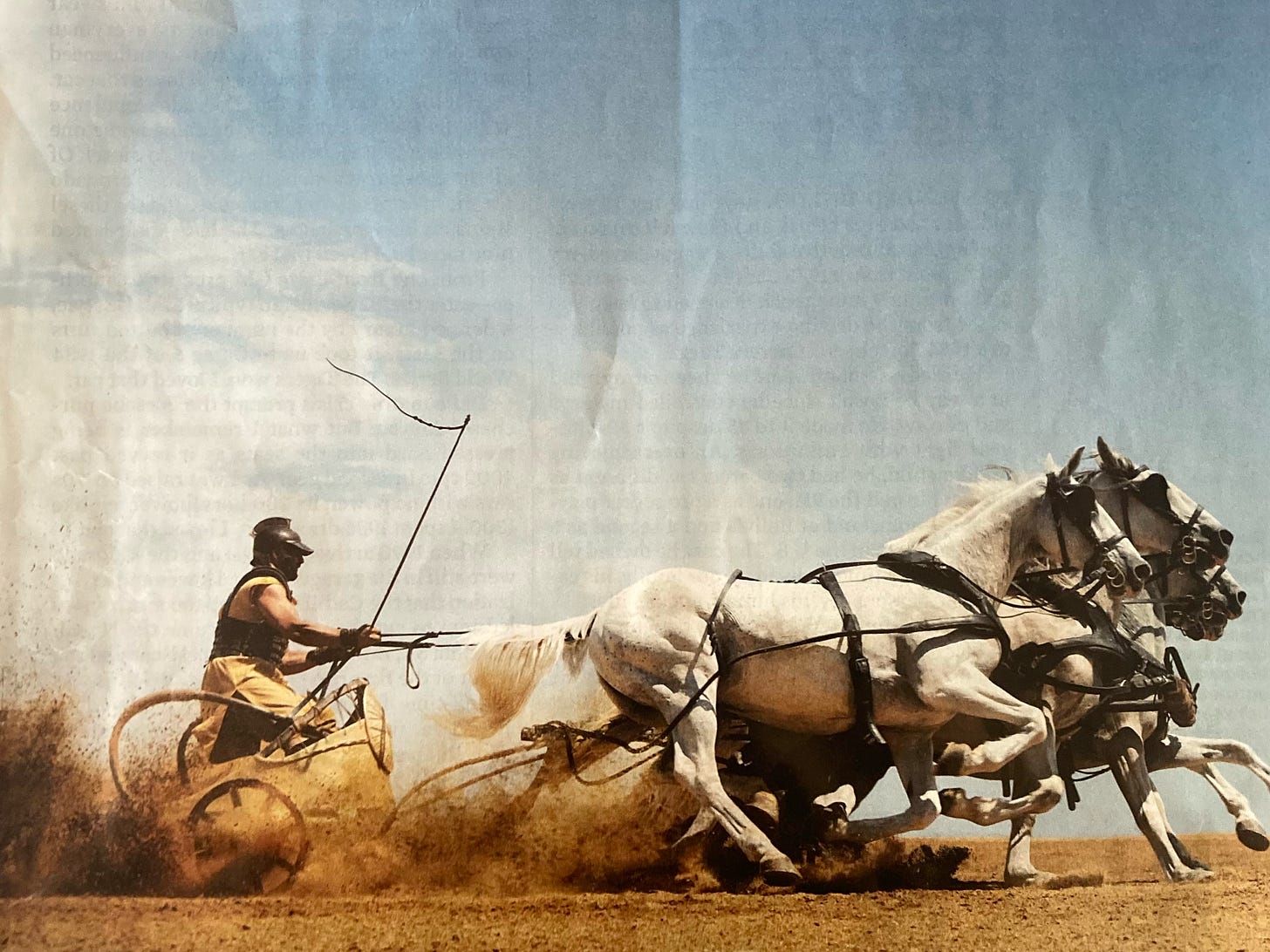
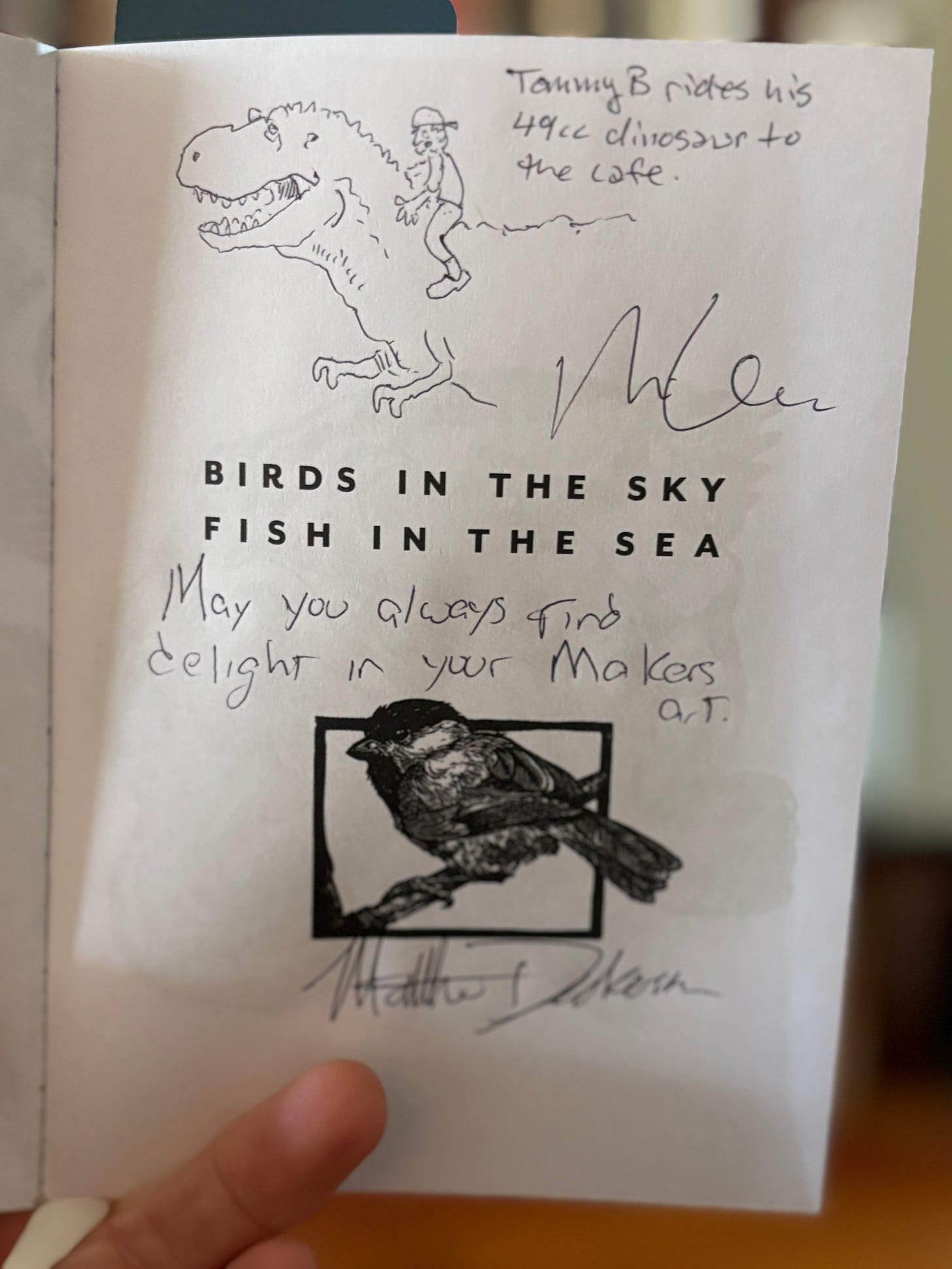


Your upcoming Row House events speak to a couple of things that are of interest to me, true crime and walking!
One of the things I look for in podcasts that deal with crime is whether or not they serve the cause of justice in some way or is it just morbid entertainment. There is a series called Proof that has seen several of its subjects exonerated after decades in prison for crimes they did not commit. I think that is one way that interest true crime can be profitable to the Christian mind.
The other area of interest is walking! I live in one of the most walkable towns in America and it has changed my life in so many ways. I recently read a book called “God Walk” by Mark Buchanan who treats walking as a Christian spiritual practice, very interesting book on the topic!
Thanks, Tom! Your words remind me of the Te Deum Laudamus (BCP, I think):
The glorious company of apostles praise you.
The noble fellowship of prophets praise you.
The white-robed army of martyrs praise you.
Throughout the world the holy Church acclaims you...